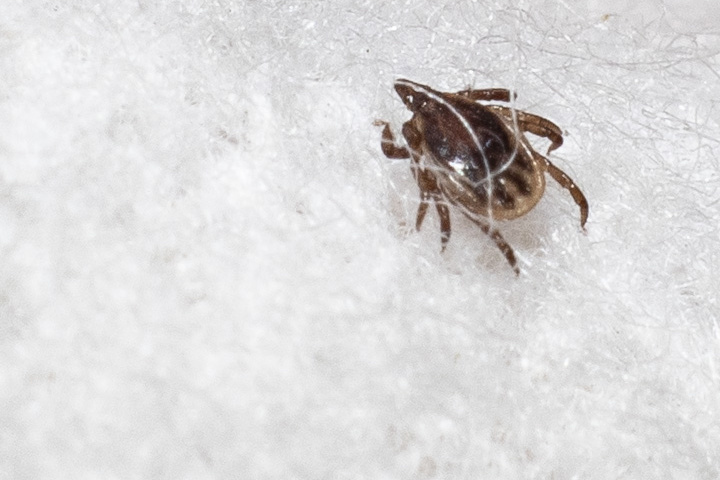Two researchers have designed a Lyme disease risk map in Estrie that takes into account the number of infected ticks in an area and the preventive behaviors adopted by the population, an element rarely taken into account in risk maps.
Among the 20 municipalities most at risk, 18 are in the local service networks of Haute-Yamaska and La Pommeraie. Sherbrooke, Bromont, Cowansville, Granby and Sutton are on this list.
“We are in forest massifs, neighborhoods [of residences] on the mountainside. This geography means that people are not only exposed when they go out in parks, but also at home, in their backyards. We talk about ‘peridomestic’, meaning that there are a lot of exhibits around the house,” explains Catherine Bouchard, co-designer of the map and professor at the Faculty of Veterinary Medicine at the Montreal university.
Preventive behaviors – using DEET-based insect repellent, taking a bath or shower and examining your body after visiting a risky area, in particular – are particularly important. “It can make THE difference”, underlines Cécile Aenishaenslin, co-author of the research, who recalls that a tick bite does not automatically give Lyme disease.
“When talking about Lyme disease, the [infected] tick must remain attached for more than 24 hours for the risk of transmitting the bacteria to be significant. It is not impossible that she transmits it before, but the longer she remains attached, the greater the probability that she will transmit the infection to you. Within 24 hours, the risk is minimal,” says Dr. Aenishaenslin.
By looking at the prevention measures adopted by 10,000 people who participated in the study, the researchers found that the environments with the highest tick densities are not necessarily the places where the transmission rates of the disease of Lyme are the highest. It also depends on whether the means of prevention are applied.
Drs Bouchard and Aenishaenslin have therefore designed their map for Public Health and municipalities so that they can carry out awareness campaigns among the population or to try to eliminate ticks from the environment, for example .
“If you are in an area with a high population density, there are a lot of ticks, but the behavior is less good, it becomes a priority to carry out interventions,” explains Dr. Bouchard, who is also a veterinary epidemiologist. at the Public Health Agency of Canada.
Currently, municipalities can cut tall grass along the most popular trails to reduce the risk of transmission of Lyme disease. They can also put up posters to warn people about the presence of ticks in parks and forests.
“Towns like Bromont are already doing this,” says Dr. Aenishaenslin. These are posters a bit like the ones you see for ragweed. If we see one of its signs, we know it, we will stay in the middle of the path and we will not let our children play in the dead leaves. »

